The Ventum One Makes a Statement

Like most cycling-related things, triathlon bike buying is at a bit of a crossroads at the moment. From disrupted supply-chains leading to slim pickings for consumers (particularly at this somewhat late moment in the purchasing cycle) to decisions on whether or not you will pursue brick-and-mortar sales to exclusively online and everything in-between, the industry is in a bit of tumult at the moment.
Arguably, one of the leaders of the disruption is the subject of this bike review. Ventum came to market differently, launching at the IRONMAN World Championships in 2015, and continues to exist slightly off the beaten path. Now headquartered in Heber City, Utah, Ventum’s progressed from the purveyor of a single triathlon bike to offering a fully fledged line-up of road, gravel, and triathlon bikes.
And it was in the midst of the COVID-19 supply chain disruption that Ventum launched the new version of its flagship product, the Ventum One. The One is part of that marching to the beat of a different drummer – taking a bit of inspiration from the Lotus 108 style of bikes, eliminating the down tube completely. The new One looked to move the bike to the new standards – disc brakes, well-designed and adjustable front-end, and more – while retaining the definitive shape and hydration option that made the original One a compelling bike.
So, how does the new one stack up?
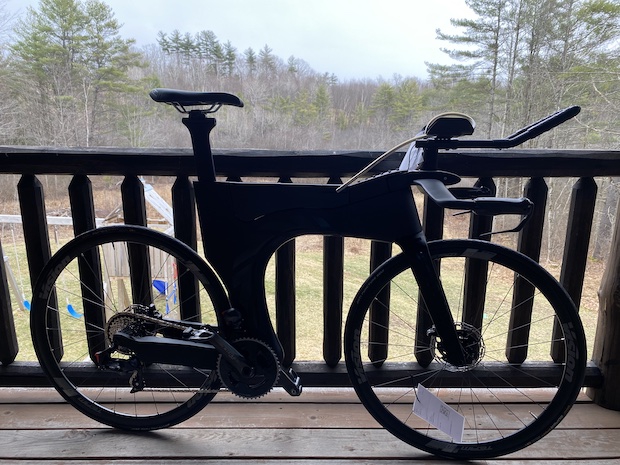
Getting Your Ventum
Before you can ride a bike, you first need to be able to procure one. Doing so through Ventum involves their online configuration tool. Ventum’s configurator is a bit more straightforward than that of, say, Quintana Roo – you choose which model you want to buy, and then the full suite of component choices and respective sizes pops up. It makes for a relatively seamless purchasing process.
The other thing that I applaud is the straightforward pricing structure. It’s easy to see how much upgrading to, say, a set of ENVE race wheels is versus equipping with a set of FSA Team 30s. There aren’t surprises from a pricing perspective. There are surprises, though, when it comes to selecting crank length – there aren’t any 167.5mm options. It’s 165, 170, 172.5, and 175. But that being said, you get your choice no matter what size bike you select.
Which means, of course, you need to have gotten your fit done first. This should seem obvious, but one look at your typical IRONMAN race day tells you the story of many people who bought bikes first, then tried to make it fit them, as opposed to having gotten the fit done first and then making a purchasing decision from there. My position is somewhat orthodox at 675mm pad stack, 495mm pad reach – it’s still almost 15cm worth of drop. A 56 in the new One hit those numbers with ease. Geometrically, the One is somewhat middle of the road in terms of its geometry. Stack, for instance, in equivalent numerical sizing for Quintana Roo’s new V-PR is almost a centimeter shorter, and the same holds true when it comes to reach. For most people with an orthodox position, it should be awfully easy to wind up getting on board your choice of Ventum.
And as for your choices of Ventum, there are four buildkits available from Shimano and SRAM, with prices for a complete bike starting at $7,499. You can buy the frame exclusively for $4,999 as well, although this is becoming less and less of a compelling option given how quickly standards are changing. For the review, I selected SRAM’s Force AXS groupset with the standard wheelset, coming in right at $7,499 for pricing. I think this or the Ultegra Di2 bikes are the best overall combined value – offering high quality componentry without going overboard.
Ventum bikes are delivered via Kitzuma. This means they come 98% assembled – you need to put your pedals on. My One arrived and I needed to adjust two items – bar height and saddle height – and it was ready to ride within 10 minutes of arriving on my front porch. Your mileage may vary.
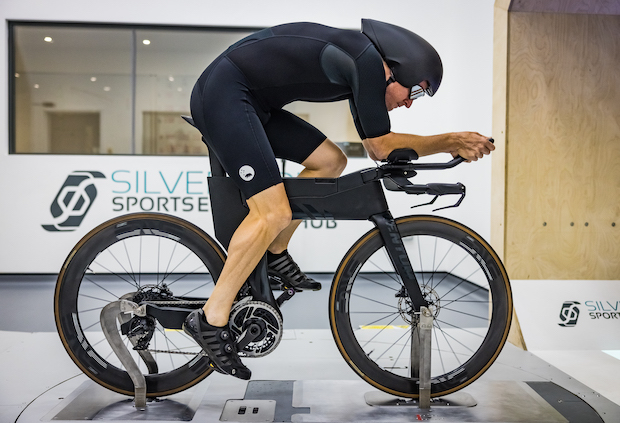
Aerodynamics
Let’s get disclaimers out of the way: I’m not an aero guy. I don’t pretend to be one. I don’t have a place to Chung test. So, generally speaking, I tend to take aerodynamic claims with a large shaker of salt in the first place. We are about as close to peak aero with bikes – a phrase that came up, interestingly enough, during the crowd-sourced testing of bikes on our forum, of which the original Ventum One participated. And although it was not the fastest bike in that test, they were all within the ballpark of one another.
With that in mind, Ventum was kind enough to share details about changes that they made to the bike. Specifically, according to their own data modeling, the new front-end of the bike is ~15% faster than the original generation, achieved by the following changes:
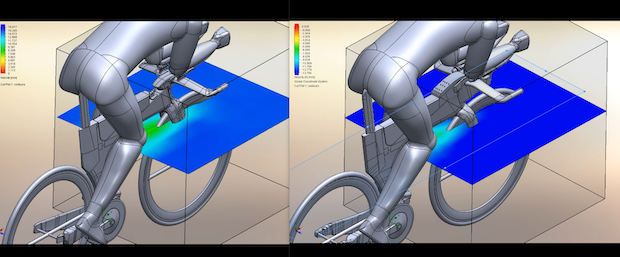
•Completely redesigned front end to ensure better fit, form and function.
•Increased fork width to accommodate up to 28mm tires which allow for increased stopping power without compromising aerodynamics.
•Hydraulic Disc brakes with internal cable routing.
•Updated integrated hydration system(1.2L or 1.4L) with storage compartment under the bottle.
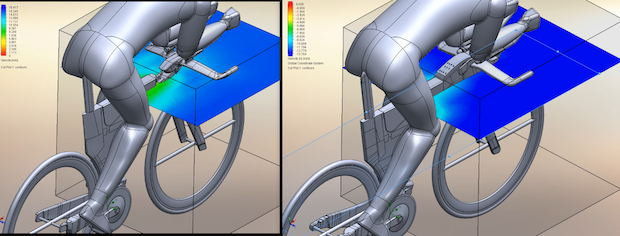
Not that it’s worth much of anything, but riding the bike it passes the “it feels fast” test with flying colors.
Adjustability and Living with the Bike
I would argue that this is more important than the above section. Because, after all, it is you, the person, that will make up much more of the drag than the bike will. And if that bike isn’t easily adjustable, or easy to live with, then the juice is not worth the squeeze. We’ve seen this time and time again with superbikes – from the horror stories of the original rear brake on the P4 to front end woes, if you can’t travel with the bike, it’s not going to work long term.
Thankfully, none of that is the case with the Ventum One. Let’s first talk bar adjustability. It’s simple – remove the cover, take off the pads, and you have literally dozens of pre-drilled options to dial in your fit. The sheer number of permutations, even within one bike, is staggering. Take that across the entire product line and, as mentioned before, I think it’s a struggle to find someone who would not fit aboard this bike decently.
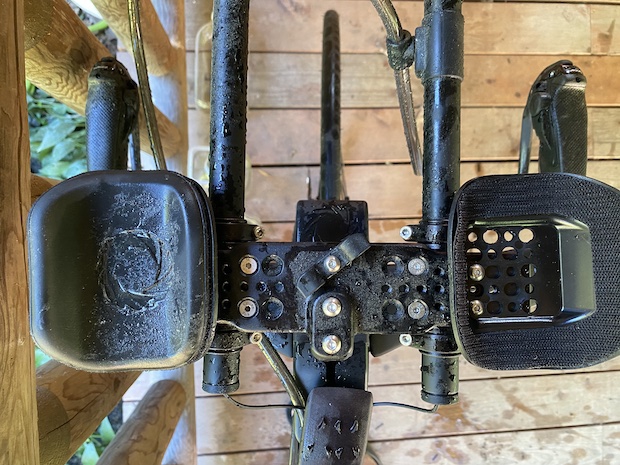
The only drawback that I can think of with all of this hardware is that there is not consistency in bolt heads. There’s a mix of 3mm, 4mm, and 5mm all together in that front-end. I suppose I have been spoiled by Quintana Roo’s move to have exactly two size bolt heads for the entire bike. But, that being said, as long as you’re used to traveling with a decent multitool, you’re going to have an easy time adjusting anything and everything to where you might want it.
I did not need to pack this bike into a travel case. However, that said, I was able to pack this bike into a spare bike box I have lying around with ease and without having to disconnect any hydraulics, etc. This bike should be somewhat easy to travel with, assuming you are the kind of person who pre-ships their bike versus flying directly with it.
Riding Characteristics
For better or for worse, I have ridden a lot of triathlon bikes in my nearly fifteen years in the sport. So I don’t say this lightly – the Ventum One is the most stable handling triathlon bike I have ever ridden.
My main route that involves the flattest terrain in my area happens to also be the primary east-west highway across southern Vermont and New Hampshire. It’s a road with an eight foot wide shoulder and a 55 MPH speed limit. Naturally, 55 MPH is a minimum speed. And there’s an awful lot of tractor-trailers or other for-hire vehicles using the road to avoid paying tolls on the Mass Pike.
This is a long way of saying that there is a lot of turbulent air. If a bike is going to handle poorly in crosswinds, you’re going to find out about it in a hurry on this road. The One just sailed along this stretch of road, unbothered by anything that went by it. No matter how fast the traffic was, or how sudden a burst of wind came along, the One held its line. Turbulence? What turbulence?
I get the feeling that this is a result of multiple factors. First, the front-center on the bike is 622mm with a wheelbase extending to 1021mm. It’s not quite as long as, say, a Cervelo P-Series. But it’s close. But the second factor has to be the missing downtube and mass area in the front-end. There’s simply not a lot there to start getting pushed around. If a cross breeze hits you, the greatest surface area is over the rear wheel and bottom bracket. Even when throwing on a set of deeper wheels, it didn’t change the handling characteristics. Stability reigns supreme.
It’s simply confidence inspiring. And I can’t help but think that someone who is more confident in aero is going to be more likely to ride in aero, which means they’re going to be faster than a bike that, on paper, should be faster but does not handle well in the real world.
In terms of frame stiffness and ride quality, the bike errs again on the side of comfort. This is a bike that wants you to ride it in the saddle. Steep climbs are best attacked by remaining seated and powering through them that way. Standing feels slightly more sluggish by comparison. It rewards those who meter the power out versus punchy accelerations.
And that’s the point, I think. It’s a bike that is going to reward those who select it for long-course triathlon training and racing. This is a bike you buy when you say “my specialty is 70.3 and up.” It is a tool tailored to that exact demographic. And, in my opinion, it’s one of the best out there for it.
Ventum One
Available: Now
Price Range: $4,999 (frameset), complete bike $7,499 to $11,899
Reviewed Bike Specs: size 56 frame, SRAM Force 1 AXS drivetrain, TRP brakes, Vision Team 30 wheelset
Dry weight with Shimano SPD-SL Ultegra pedals: 23 lbs, 9.5 ounces
Photo Credits:
1, 2, 6 Slowtwitch.com
3 Darren Wheeler
4, 5 Ventum Racing


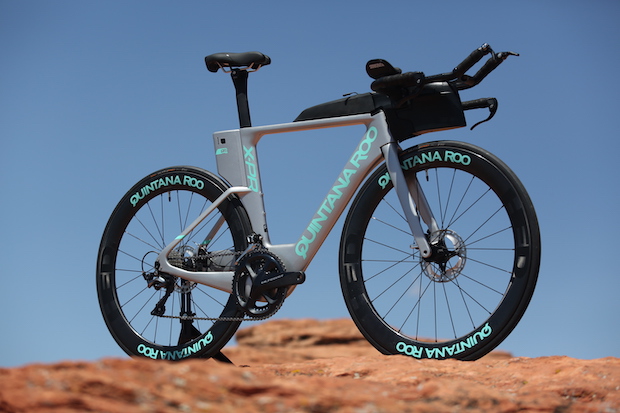
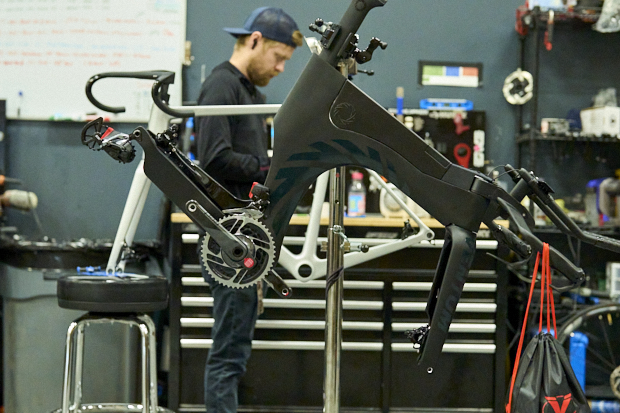
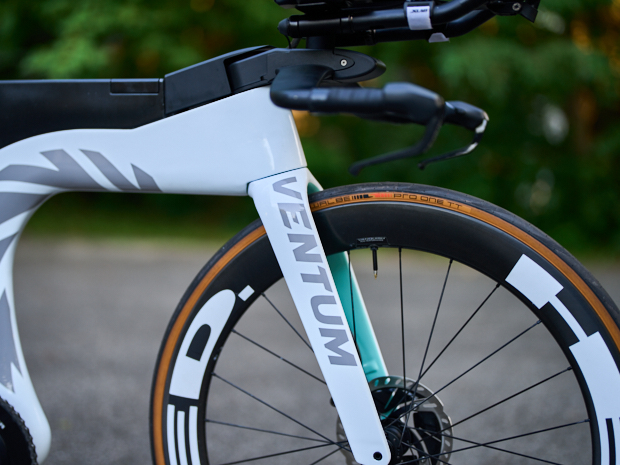
Start the discussion at slowtwitch.northend.network